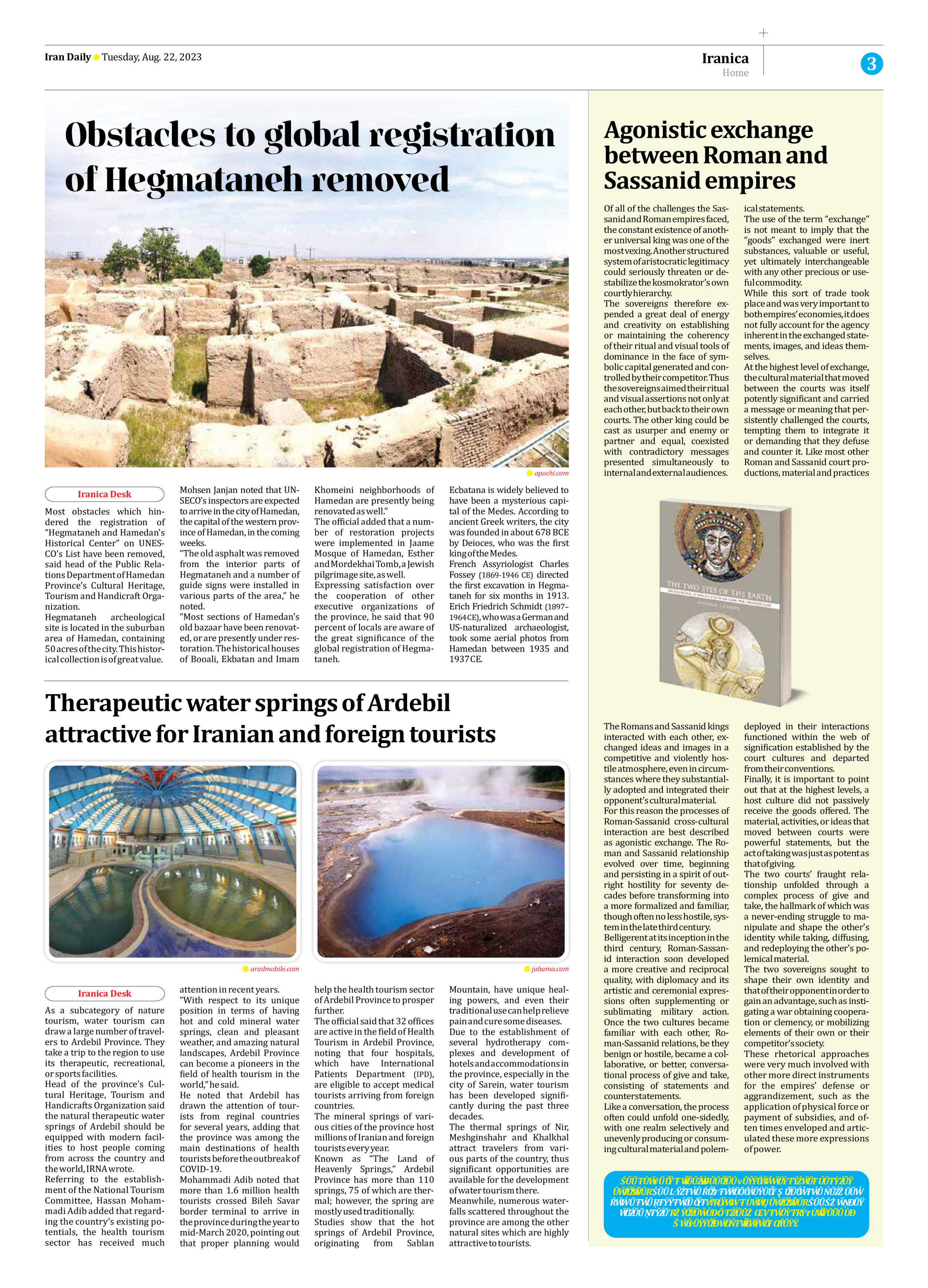
Obstacles to global registration of Hegmataneh removed
Most obstacles which hindered the registration of “Hegmataneh and Hamedan’s Historical Center” on UNESCO’s List have been removed, said head of the Public Relations Department of Hamedan Province’s Cultural Heritage, Tourism and Handicraft Organization.
Hegmataneh archeological site is located in the suburban area of Hamedan, containing 50 acres of the city. This historical collection is of great value.
Mohsen Janjan noted that UNSECO’s inspectors are expected to arrive in the city of Hamedan, the capital of the western province of Hamedan, in the coming weeks.
“The old asphalt was removed from the interior parts of Hegmataneh and a number of guide signs were installed in various parts of the area,” he noted.
“Most sections of Hamedan’s old bazaar have been renovated, or are presently under restoration. The historical houses of Booali, Ekbatan and Imam Khomeini neighborhoods of Hamedan are presently being renovated as well.”
The official added that a number of restoration projects were implemented in Jaame Mosque of Hamedan, Esther and Mordekhai Tomb, a Jewish pilgrimage site, as well.
Expressing satisfaction over the cooperation of other executive organizations of the province, he said that 90 percent of locals are aware of the great significance of the global registration of Hegmataneh.
Ecbatana is widely believed to have been a mysterious capital of the Medes. According to ancient Greek writers, the city was founded in about 678 BCE by Deioces, who was the first king of the Medes.
French Assyriologist Charles Fossey (1869-1946 CE) directed the first excavation in Hegmataneh for six months in 1913. Erich Friedrich Schmidt (1897–1964 CE), who was a German and US-naturalized archaeologist, took some aerial photos from Hamedan between 1935 and 1937 CE.







